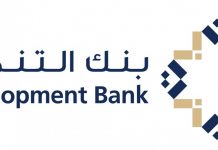The recovery in economic activities will create a higher demand for credit and other banking services. The banking performance is expected to further improve in all spheres during 2020, says HE Tahir bin Salim bin Abdullah Al Amri, Executive President, Central Bank of Oman in an interview with Oommen John P
Can you share highlights of the banking sector’s performance in 2019 and the outlook for 2020?
The banking sector in the Sultanate has made rapid strides over the years, providing efficient financial intermediation and contributing to growth along with fostering financial stability. Notwithstanding the economy experiencing different business cycles over the years largely due to oil prices, the banking sector displayed resilience and supported the economic activities through providing the requisite credit and other banking services to each segment of the society.
Turning to the performance in 2019, the banking sector made reasonable progress in almost all spheres, despite the economy witnessing a slowdown. The bank credit grew by 3.0 percent during January-November 2019 with major contributions emanating from the private sector. The aggregate deposits held with the banking sector increased relatively lower by 1.7 percent during this period. The performance in terms of banking business, however, has been in line with economic activities, especially in the non-oil sector that experienced a nominal contraction of 2.1 percent in the first nine months of 2019. In terms of financial soundness, the banking sector’s capital adequacy ratio (CAR) stood at 18.1 percent in September 2019 as against the mandated 13.5 percent, displaying robustness. Excess CAR provides ample headroom to the banks for extending additional credit as demand picks up with recovery in non-oil economic activities. At the same time, non-performing loans (NPLs) constituted just 3.1 percent of total loans in the banking sector during September 2019.
IMF, in its recent report, has also projected Oman’s nominal growth at 2.7 percent and real growth at 3.7 percent for 2020. The recovery in economic activities would create a higher demand for credit and other banking services and hence, it is expected that banking performance in all spheres would further improve during 2020.
Are developments in technology and regulation having transformative effects on the banking sector?
Technological developments are touching each segment of the ecosystem and the banking sector is certainly not left out in this regard. In Oman, the banking sector has always been ahead of the curve on the technology front, implementing cutting-edge technologies/applications to improve customer service, safety and security of transactions, operational efficiency and productivity, financial outreach, etc. Technology-driven applications, such as Internet banking, mobile banking, payments and settlement solutions and so on have transformed the banking business considerably in the Sultanate as it did in the world over the last few years. The Central Bank of Oman also facilitates the adoption of the latest technology in the banking sector by providing state-of-the-art efficient and secure National Payment Systems (NPS) infrastructure. As the banking sector in Oman has not shied away from embracing any new technology, I am sure that banks must be exploring the use of latest technologies on the anvil including artificial intelligence, blockchain, cloud computing and so on.
Coming to the effects of regulation, the rationale behind financial regulation is to allow banks and financial institutions to conduct financial intermediation while ensuring the safety and stability of the financial sector as a whole.
The regulatory practices have also evolved over time, turning more market-oriented wherein feedback received from the market has become critical for any decision making. In Oman, the financial regulations generally follow international best practices, such as Basel guidelines on capital requirements, risks, assets classifications, liquidity measures, etc., which are fine-tuned to the domestic economic and financial conditions. All these regulatory practices have had profound transformative effects on the banking sector in terms of the ability to maintain resilience (adequate capital, lower risks, and profitability) while supporting economic activities. I am glad to share that the banking sector in Oman has become strong, efficient and competitive and it will continue to be an active and effective partner in supporting the country’s vision of diversifying the economy.
Is the digitalisation trend enabling banks to increase profitability?
One of the main objectives behind increased digitalisation in the banking sector is to improve operational efficiency and profitability by re-orienting business processes. Additionally, as the society is going digital, the banks know that failing to meet the customers’ expectations means losing out in the competition. It is a fact that digitalisation involves a large investment in IT and related infrastructure, but it leads to improved banks’ profitability by enabling operations with a lighter cost structure. With digitalisation, banks are able to operate with fewer branches and personnel because the majority of services are automated.
The next wave in digitalisation, consisting of new technologies such as artificial intelligence and blockchain, is expected to improve operational efficiency and profitability further in the banking sector. Digitalisation, however, also brings new competition to banks from new players such as digital banks and Fintechs as it blurs the boundaries between digital and other services.
What are the new banking trends that will spur banking sector growth?
Increased digitalisation through adopting new technologies, such as artificial Intelligence, blockchain, cloud computing, etc., is likely to be one of the prominent new trends that will boost growth in the banking sector. Additionally, the new service providers, viz. Fintechs, digital banks, major technology companies (e.g. Google, Apple, Amazon, etc.) would be expanding their footprints in the banking sector, leveraging on the latest technology. Hence, banks will have to find innovative ways to deal with such competition so that their growth is not impacted.
What are challenges facing the banking sector?
The banking sector in Oman is strong with adequate capital and a low level of non-performing loans. Nevertheless, as the Omani economy is going through slowdown on the back of low oil prices, the banking sector will have to put extra efforts to keep the momentum going in business. It is commendable that despite varying economic conditions, the banking sector did not allow any considerable slip in their assets. Nonetheless, the banking sector will also have to observe extra prudence so that the quality of its assets does not deteriorate under the current macroeconomic conditions. Another issue the banking sector may have to deal with is the competition from new non-bank players, especially Fintechs. However, I am sure that banks in Oman operate on the frontier when it comes to technology and they will be able to covert this competition into a synergy for their growth.






